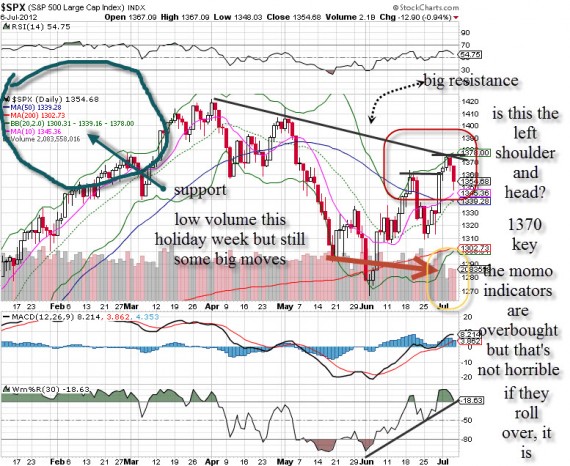Hope is not a strategy – Famed Packer coach Vince Lombardi
The media, pundits, analysts and so-called experts continue to want more easing in the hopes that it’ll stimulate the economy. This is clearly some hope of better things to come but the reality is there is little correlation between adding liquidity and stimulating aggregate demand.
To bring rates down in a global easing effort will only serve to throw more money at the markets, and if that creates a momentum move then so be it. I won’t argue but will play along. But how much more can the central banks do at this point? Is there any more left in the tank that will make a difference?
The act of bringing more dollars to the table continues to be a dangerous game of ‘if not when’ the inflationary chips fall into place. Even with falling commodity prices the first quarter saw elevated pricing levels (a closely watched chain deflator was up nearly 2%) and any further stimulus might push this into the red zone (above 2%). Volatility has picked up in oil, gold and other commodities, corn is rising due to bad weather (lousy crop) and beans are not far behind.
By far the biggest scare for Bernanke and the Fed is deflationary forces taking hold but we expected this to occur as the ‘great de-leveraging’ from the ‘great recession’ commenced. I have recently finished a wonderful book about the entire de-leveraging process and how it will effect the world when it’s over, called Endgame by John Mauldin. I highly recommend reading it to learn about our future.
As a trader, I look to the market action to get me going on my trades. I could care less if there was stimulus from the EU or a rate cut from China or helicopter drops from Bernanke. If the indicators, money flow and trends are in place (up or down) then we go with it. Those hoping for external activity that is completely out of their control are going to be pushed around constantly – back and forth by the uncertainties of a new path.
[tentblogger-youtube oJYRtOPUonA]
As we embark on the second quarter earnings season we see a market that anticipating or hoping things were not so bad and that the outlook for the rest of 2012 may show some promise. As stated above, monetary stimulus will not (and has not) significantly lift aggregate demand.
The current structure of the SPX 500 chart shows price hit a tough resistance line last week and we may be forming a slight head/shoulders pattern. Take a look at the chart below. As Real Money contributor Helene Meisler notes quite often she sees head and shoulders patterns everywhere, but it’s when everyone sees them they are bound to fail.
Volume was muted last week due to the short sessions and volatility came in excessively as the ‘news’ has been unwinding. The EU summit, the Greece elections and the Spanish ‘solution’ has eased fears of any armageddon taking place (well, at least for the foreseeable future).




















